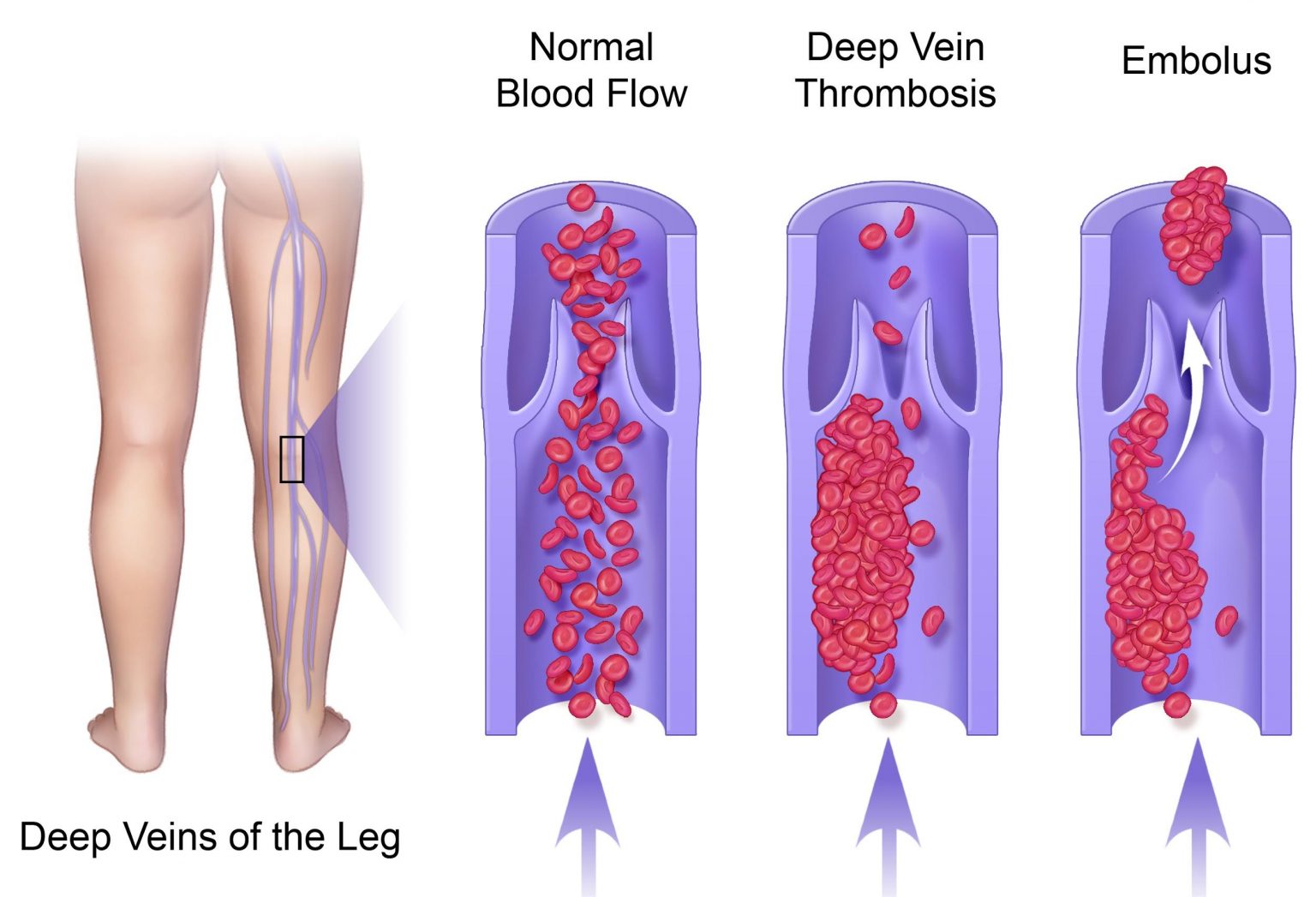
When circulation becomes poor in the legs due to failing venous valves, blood begins to pool and can no longer return to the heart. Conditions such as spider veins and varicose veins can become obvious as a result of surface vein malfunctions. Some much more serious problems occur, however, when blood cells begin to form clumps in the vein, creating blood clots known as DVT. DVT is the medical abbreviation for deep vein thrombosis. A deep vein thrombosis is a blood clot that forms in the extremities. The danger lies in the possibility that the clot can travel back through the circulatory system and clog the lungs, causing pulmonary embolism and possibly death.




